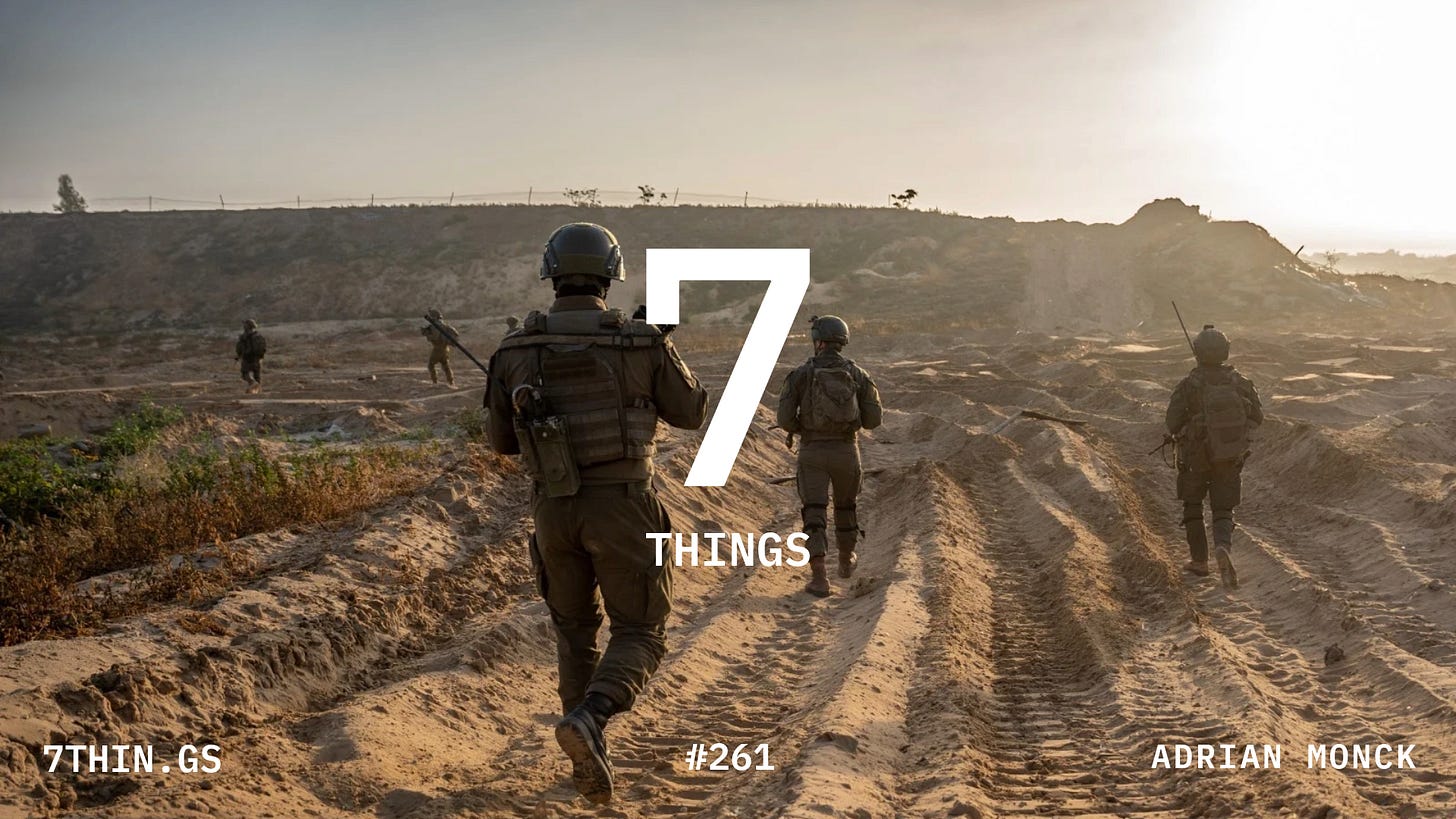For What Shall It Profit a Nation?
Israeli research on how occupation and control have cost the country its soul
Grüezi!
When I travelled alone in Northern Ireland as a journalist, there were times British soldiers took me for Irish, and times Irish people took me for a soldier. It was instructive about how conflict reshapes perception.
Shortly after the 7 October attacks, I spent time with a group of Israelis. They still felt the raw violence of the attacks on frie…
Keep reading with a 7-day free trial
Subscribe to 7 THINGS to keep reading this post and get 7 days of free access to the full post archives.



